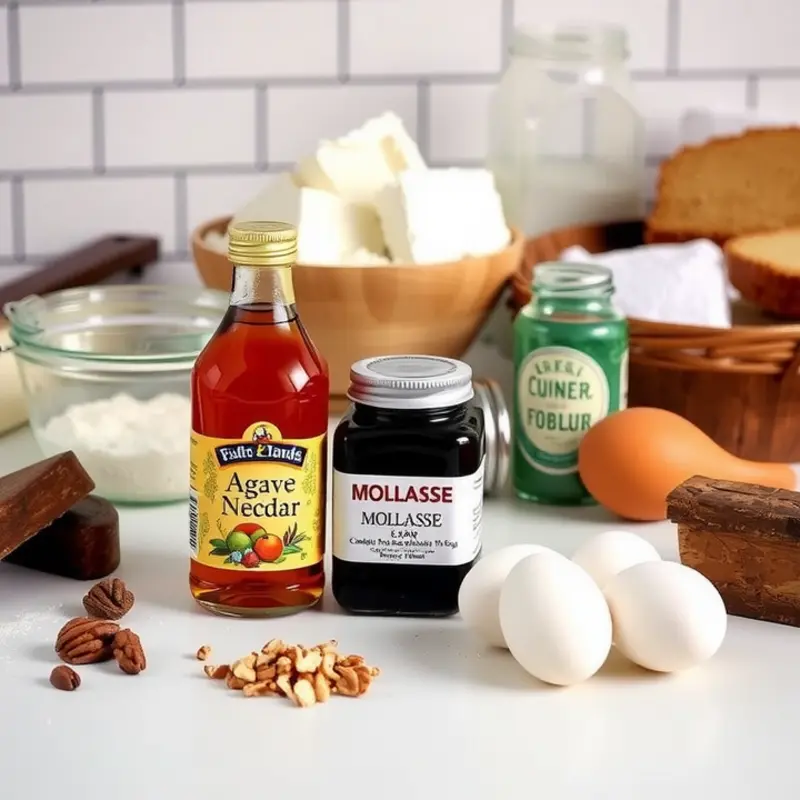Need quick rice syrup in your recipes, but short on time or ingredients? Discover practical alternatives that not only work well in your favorite dishes but also align with various dietary needs. From natural sweeteners to pantry staples, these substitutions will keep your meals delicious and satisfying.
Natural Sweeteners: Honey and Maple Syrup

Honey and maple syrup serve as versatile and healthy substitutes for rice syrup, offering distinct flavors and nutritional benefits. Understanding how to adjust recipes to incorporate these sweeteners is crucial.
Honey is renowned for its golden hue and sweet aroma, derived from nectar gathered by bees. It presents a slightly higher sweetness level compared to rice syrup, necessitating adjustments to recipe proportions. For every cup of rice syrup, use about 3/4 cup of honey and reduce the liquid in the recipe by 1/4 cup to maintain consistency. Honey not only enhances sweetness but also enriches dishes with its antioxidant, antibacterial, and prebiotic properties. It’s a natural source of quick energy, beneficial for those seeking a clean, sustaining boost during the day. However, its distinct flavor can be overpowering, so start with small amounts when experimenting with new recipes.
Maple syrup, tapped from the sap of maple trees, provides an earthy, robust sweetness. It is slightly less sweet than honey, making it a more subtle rice syrup alternative. Substitute rice syrup with an equal amount of maple syrup, maintaining the texture of the recipe. Its deep, rich taste complements a vast array of dishes, from breakfast pancakes to savory glazes. Maple syrup contains important minerals like manganese and zinc, supporting immune health and energy production. Furthermore, it has a lower glycemic index than honey, promoting more stable blood sugar levels.
Both honey and maple syrup are effective in various culinary applications, from baking to dressings. They are especially useful in addressing unconscious eating patterns by offering naturally derived sweetness, which can be more satisfying and less addictive than refined sugars. Emphasizing natural sweetener options can encourage more mindful eating habits, aligning with health-conscious goals.
Experimenting with these natural sweeteners allows for personalization of dishes, achieving desired sweetness while reaping nutritional advantages. Execute precise swaps in recipes to maintain quality and enjoy the added health benefits that honey and maple syrup bring to the table.
Pantry Essentials: Agave Nectar and Molasses

Agave nectar and molasses are two exceptional substitutes for rice syrup, each offering unique qualities. Agave nectar, sourced from the agave plant, is a versatile ingredient favored for its mild and neutral sweetness. Its consistency is somewhat similar to honey, yet it possesses a lower glycemic index. This makes agave nectar a favorite among those seeking to manage blood sugar levels.
When using agave nectar, it’s important to adjust the quantities in your recipes due to its sweeter taste. A good rule of thumb is to use ⅔ cup of agave nectar for every cup of rice syrup. Additionally, since agave is liquid, reduce other liquids in your recipe by approximately ¼ cup to maintain the desired consistency.
Molasses, on the other hand, is rich and robust, offering a full-bodied taste that complements spiced dishes and baked goods. Derived during the sugar extraction process, molasses can range from light to dark, with blackstrap molasses being the most concentrated in nutrients. It’s rich in minerals like iron, calcium, and magnesium, making it not only a sweetener but a nutrient booster.
For those new to cooking with molasses, consider its intensity and adjust it to taste. Use about ¾ cup of molasses for each cup of rice syrup, and because of its thicker consistency, you may wish to add a bit more liquid to your dish. This ensures your baked goods remain moist. Molasses shines in gingerbread, barbecue sauces, and marinades, offering a depth of flavor that enhances savory and sweet dishes alike.
The flavor profiles of agave nectar and molasses cater to different culinary needs, yet both serve as outstanding replacements for rice syrup. Agave’s mildness makes it ideal for smoothies, tea, and dressings without overpowering other flavors. Explore how to enhance flavors naturally for those seeking unrefined alternatives.
Incorporating these alternatives requires slight recipe adjustments but promises rewarding results. By understanding their flavors and proper usage, you can skillfully substitute rice syrup while aligning with dietary preferences.
Final words
Quick rice syrup alternatives like honey, maple syrup, agave nectar, and molasses not only fit seamlessly into your cooking but also cater to various dietary preferences. By using these substitutes, you can adjust sweetness, taste, and texture in your recipes without compromising flavor. Experiment with these natural ingredients to enhance your culinary experience. Remember that cooking is all about flexibility—so don’t hesitate to make these swaps and enjoy the journey!







